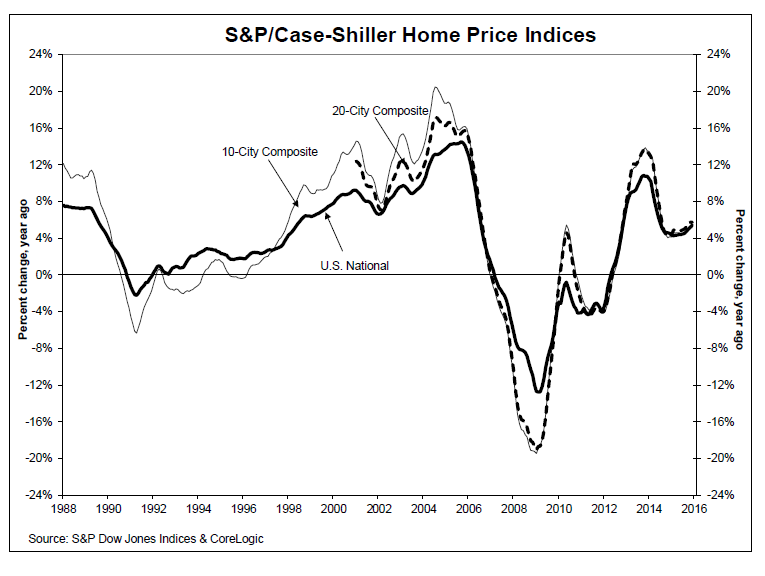Analysis

February 25, 2016
Existing Home Sales Up Slightly in January for Strongest Pace Since July
Written by Sandy Williams
A 0.4 increase in January purchases pushed existing home sales to their highest annual rate in six months, according to data from the National Association of Realtors. The seasonally adjusted annual rate of 5.47 million in January was 11 percent higher than a year ago.
The uptick in sales was accompanied by higher home pricing due to tight supply, said NAR.
“The housing market has shown promising resilience in recent months, but home prices are still rising too fast because of ongoing supply constraints,” said Lawrence Yun, NAR chief economist. “Despite the global economic slowdown, the housing sector continues to recover and will likely help the U.S. economy avoid a recession.”
Median existing home prices increased 8.2 percent year over year to $213,800. Inventory at the end of January as 1.82 million units, up 3.4 percent from December but 2.2 percent below January 2015 levels. At the current sales pace, the inventory supply is 4.0 months.
“The spring buying season is right around the corner and current supply levels aren’t even close to what’s needed to accommodate the subsequent growth in housing demand,” says Yun. “Home prices ascending near or above double-digit appreciation aren’t healthy – especially considering the fact that household income and wages are barely rising.”
Single family sales increased just 1.0 percent in January to a SAAR of 4.86 million. Median price for an existing single-family home was $215,000, up 8.3 percent from January 2015.
Condo and co-op sales fell 4.7 percent to a SAAR of 610,000 units but was still 8.9 percent higher than the January 2015 level. Condo prices also showed an increase, jumping 7.4 percent from 2015, to a median of $203,900.
Regional breakdown is as follows:
Northeast +2.7 percent to an annual rate of 760,000, 20.6 percent above a year ago; median price $247,500, up 0.9 percent y/y
Midwest, +4.0 percent to an annual rate of 1.30 million, 18.2 percent above January 2015; median price $164,300, up 8.7 percent y/y
South 2.24 million in January (unchanged from December), 5.7 percent above January 2015; median price $184,800, up 8.5 percent y/y
West -4.1 percent to an annual rate of 1.17 million, still 8.3 percent higher than a year ago; median price $309,400, up 7.4 percent y/y
S&P Case Shiller Home Price Indices
Home prices for December were released by the S&P Dow Jones Indices on February 23 and show 5.4 percent annual increase in December 2015 versus a 5.2 percent increase in November 2015.
“While home prices continue to rise, the pace is slowing a bit,” says David M. Blitzer, Managing Director and Chairman of the Index Committee at S&P Dow Jones Indices. “Seasonally adjusted, Miami had lower prices this month than last and 10 other cities saw smaller increases than last month. Year-over-year, seven cities saw the rate of price increases wane. Even with some moderation, home prices in all but one city are rising faster than the 2.2% year-over-year increase in the CPI core rate of inflation.
“Sparked by the stock market’s turmoil since the beginning of the year, some are concerned that the current economic expansion is aging quite rapidly. The recovery is six years old, but recoveries do not typically die of old age. Housing construction, like much of the economy, got off to a slow start in 2009-2010 and is only now beginning to show some serious strength. Continued increases in prices of existing homes, as shown in the S&P/Case-Shiller Home Price Indices, should encourage further activity in new construction. Total housing starts have stayed above an annual rate of one million starts per year since last March and single family home have been higher than 700,000 units at annual rates since June. Housing investment continues its positive contribution to GDP growth.”








